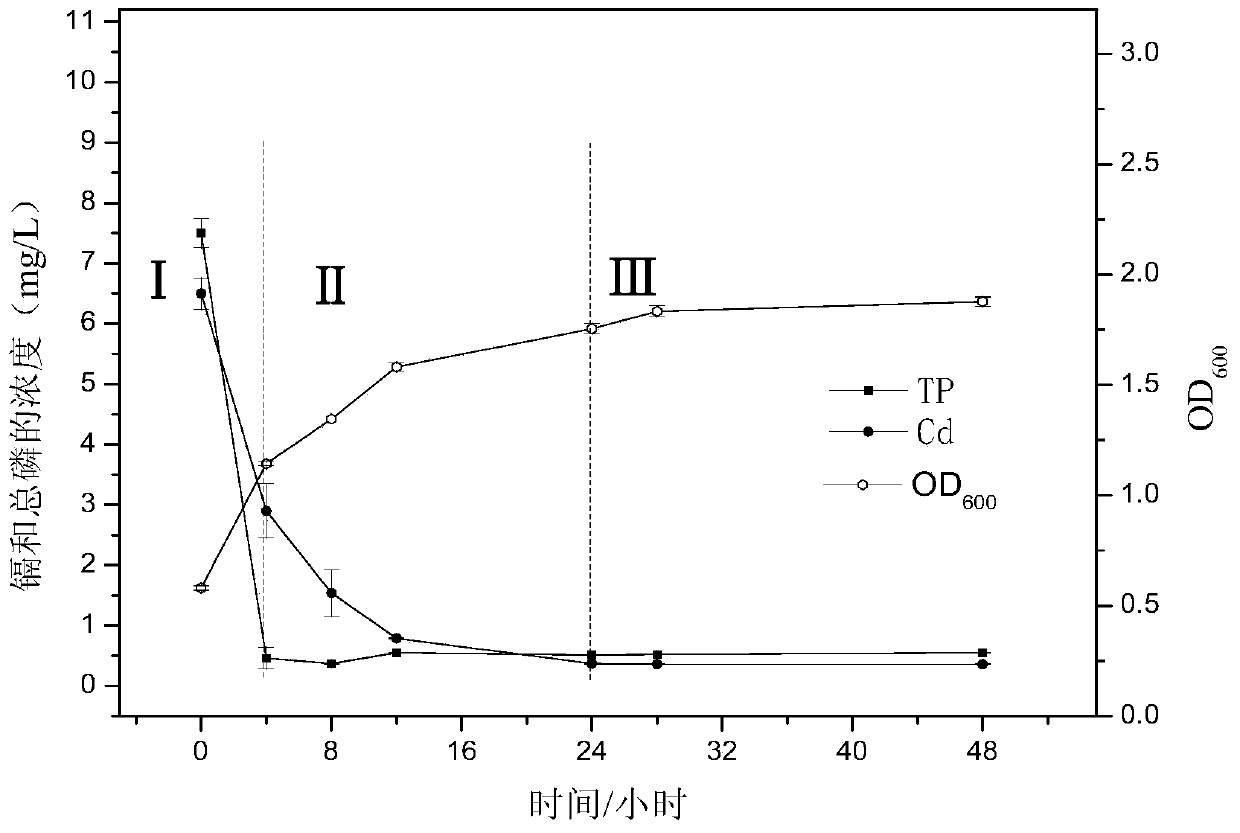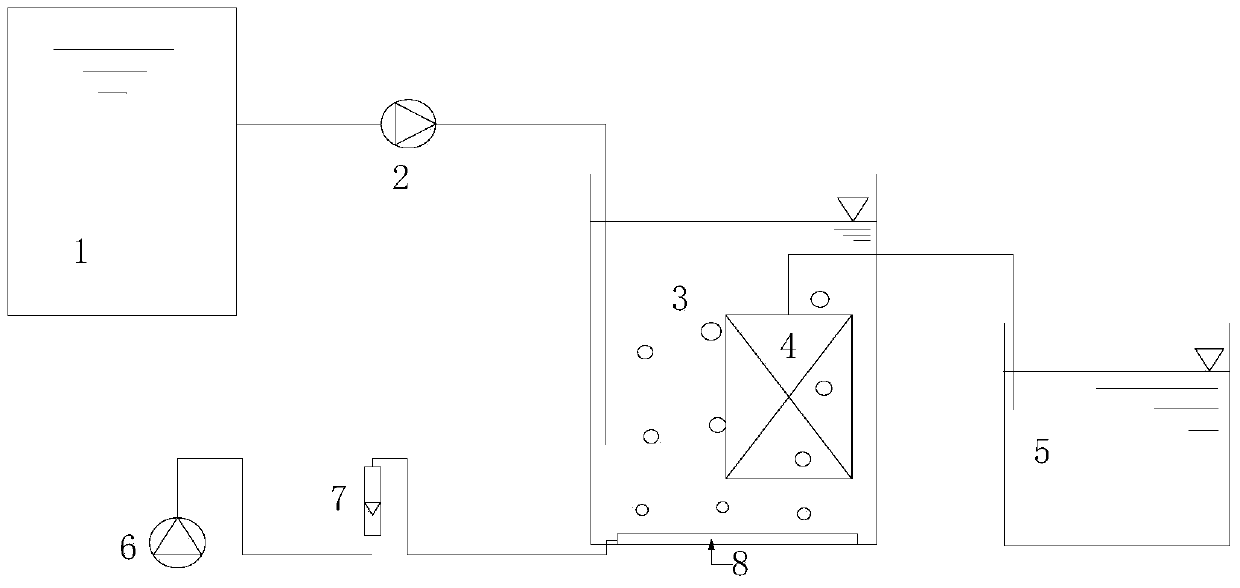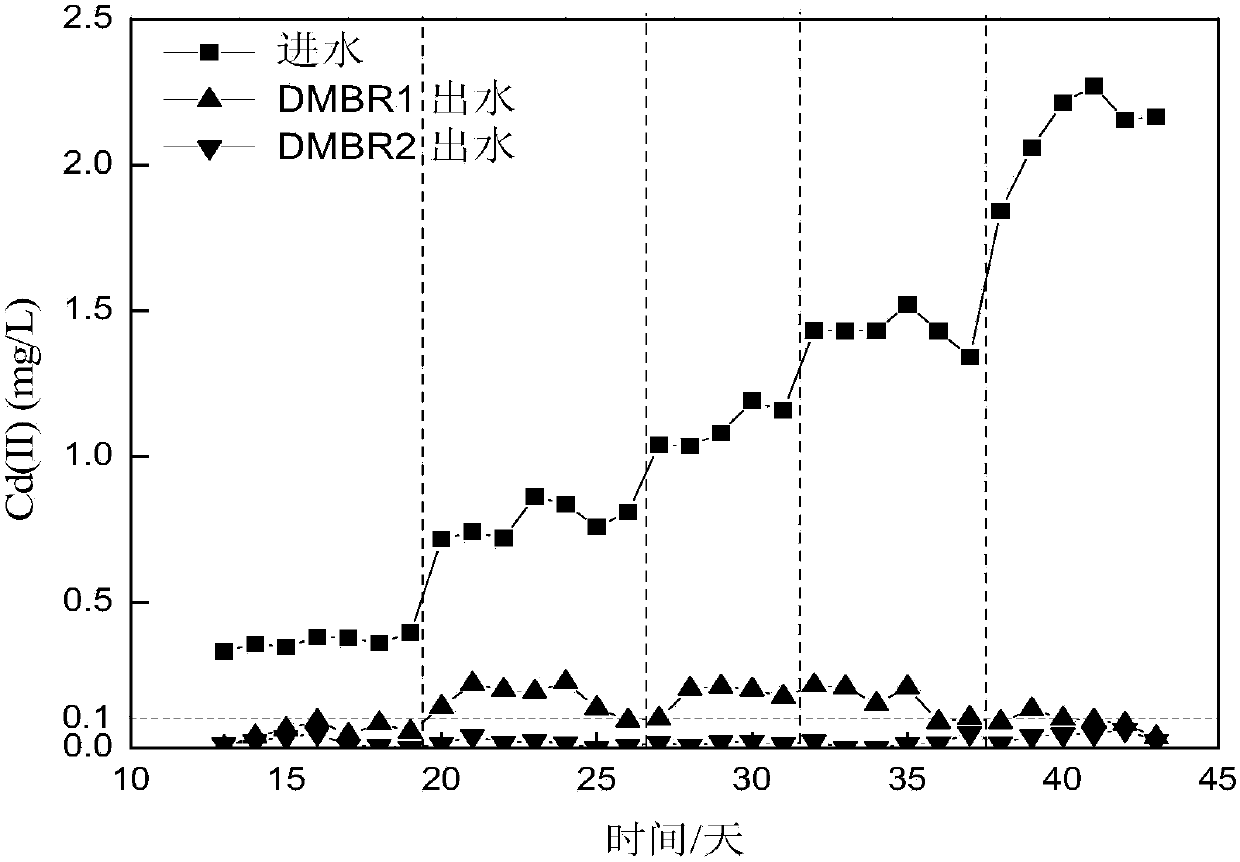Pseudoalteromonas sp. capable of efficiently removing cadmium and phosphorus in wastewater and application thereof
A technology of pseudoalteromonas and bacteria, applied in the direction of bacteria, water pollutants, chemical instruments and methods, etc., can solve the problems of wastewater treatment that are rarely reported, achieve broad industrial application prospects, high removal rate, and low cost Effect
- Summary
- Abstract
- Description
- Claims
- Application Information
AI Technical Summary
Problems solved by technology
Method used
Image
Examples
Embodiment 1
[0034] Screening for Pseudoalteromonas sp. DSBS:
[0035] (1) 193 bacterial strains obtained from deep sea mud in the South China Sea were activated in seawater LB liquid medium and spread on solid LB medium plates containing cadmium concentrations of (50-250) mg / L respectively , place the plate upside down in the incubator and culture until colonies grow.
[0036] (2) After activating all strains with cadmium resistance level of 100mg / L for 24 hours, inoculate 2% (v / v) inoculum into 100ml seawater LB liquid medium containing cadmium concentration of 50mg / L, 200r / After 7 days of incubation on a shaker, the bacterial liquid was centrifuged at 10,000 r / min, and the remaining cadmium concentration in the supernatant was determined.
[0037] (3) Select the strain with the best cadmium removal effect.
[0038] The obtained strain can grow under the culture conditions of 15-30°C, pH value 7-8, and salinity 2%-5%. In pairs or short chains, with capsules and flagella. The colony ...
Embodiment 2
[0041] The cultivation method of Pseudoalteromonas sp. (Pseudoalteromonas sp.) DSBS, the steps are as follows:
[0042] (1) Inoculate the DSBS of Pseudoalteromonas sp. obtained in Example 1 into liquid LB medium, activate and culture at 25°C for 24 hours, and prepare the activated bacterial liquid;
[0043] (2) Inoculate the activated bacterial solution prepared in step (1) into simulated wastewater at a volume fraction of 10%, shake and culture at 25°C and 200r / min for 24h, and centrifuge at 10000r / min for 10min. That is, Pseudoalteromonas sp. (Pseudoalteromonas sp.) DSBS cells were obtained.
[0044] The composition of simulated wastewater in the step (2) is as follows:
[0045] Glucose 4.6g / L, sodium acetate 1.5g / L, sodium chloride 3.5g / L, magnesium sulfate heptahydrate 2.4g / L, ammonium chloride 2.6g / L, cadmium (Cd(HNO 3)2.4H 2 O) and total phosphorus (K 2 HPO 4 ) concentrations were 6.5mg / L and 7.5mg / L, and the initial pH was 7.5.
[0046] Described liquid LB culture...
Embodiment 3
[0049] The Pseudoalteromonas sp. (Pseudoalteromonas sp.) DSBS thalline that embodiment 2 is made is inoculated in the Erlenmeyer flask that 100ml simulated waste water is housed in 250ml with the inoculum of volume percentage 10%, and wherein cadmium, total phosphorus concentration are respectively 6.5mg / L and 7.5mg / L, the pH value is 7.5, cultured at 25°C for 48 hours, centrifuged to collect the supernatant, and determine the remaining cadmium ion concentration and total phosphorus content in the supernatant.
[0050] As detected by molybdenum antimony anti-spectrophotometry and flame atomic absorption method, the content of phosphorus and cadmium decreased significantly, and phosphorus was removed first, and finally the removal rates of phosphorus and cadmium were greater than 90%. The results are as follows figure 1 shown.
[0051] The cadmium-adsorbed bacterial adsorbent was centrifuged at 10,000 r / min for 10 min, and washed twice with deionized water to obtain the cadmium...
PUM
 Login to View More
Login to View More Abstract
Description
Claims
Application Information
 Login to View More
Login to View More - R&D
- Intellectual Property
- Life Sciences
- Materials
- Tech Scout
- Unparalleled Data Quality
- Higher Quality Content
- 60% Fewer Hallucinations
Browse by: Latest US Patents, China's latest patents, Technical Efficacy Thesaurus, Application Domain, Technology Topic, Popular Technical Reports.
© 2025 PatSnap. All rights reserved.Legal|Privacy policy|Modern Slavery Act Transparency Statement|Sitemap|About US| Contact US: help@patsnap.com



